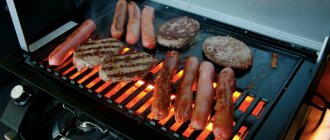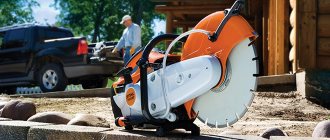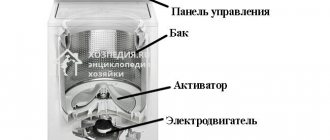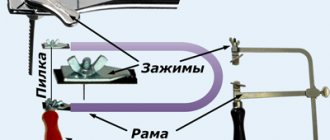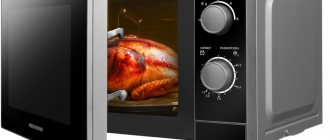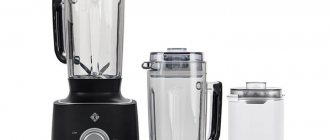A dehydrator for fruits and vegetables is a device that removes moisture from foods while preserving their flavor properties. When liquid is removed, the growth of microorganisms that cause food spoilage is significantly reduced. This leads to increased shelf life of food. A dehydrator dries fresh food, preserving vitamins and other beneficial substances. The differences between this electric kitchen appliance and a conventional dryer, its varieties and proper use will be discussed later in the article.
Difference from dryer
Many people confuse a dryer and a dehydrator, but these are different devices. In the first device, you can set the output temperature of the air flow. After passing through the first tray, it goes down, and on the last one it almost doesn’t remain. Drying is carried out unevenly in different places of the same tray. As a result, the food pieces are moist on the inside and dry on the outside. If we consider what a household dehydrator is, then this device evenly dries food, dehydrating it inside and out. It allows you to precisely regulate the temperature.
Operating the Dehydrator
The device is easy to operate. All the necessary buttons are located on the case, including “Start”, using which you can set the timer and adjust the temperature. Before starting to operate the dehydrator, you should simply install its plug into a 220 V socket. At the same time, it is forbidden to place things or objects on the device’s blowing system, because this will create an obstacle to normal air circulation.
Purchasing a kitchen aid such as a dehydrator will not only simplify the preparation of a number of dishes, but will also allow the owner to eat healthy food. In addition, this kitchen appliance will help you save your budget on purchasing dried fruits and will not let the next harvest from your dacha go to waste. There may be some differences in the operation of different models of dehydrators. This is indicated more precisely in the instructions for the products used.
Design
The electric dehydrator consists of the following elements:
- Thermostat. Regulates process temperature. It can be set at different heating levels or degrees.
- Timer. Turns off equipment after a certain period of time.
- Fan. Distributes heated air throughout the space.
- Power supply. Provides operation of the fan and heating element.
- Rectangular or round trays. Many people are interested in what kind of dehydrator sheet this is and what functions it performs. Chopped pieces of food are placed on it. The trays are pulled out as trays or stacked on top of each other.
- A heating element. Heats the air flow due to electrical resistance.
- Frame. Keeps heated air inside. The quality of drying depends on its tightness.
How to choose a dehydrator for your home
When choosing a dehydrator or dryer for your home, first of all make for yourself the most complete list of tasks that you will solve with the help of this device. If you take the device only for seasonal drying of apples or mushrooms, then the basic models are also suitable for you. If you need the function of drying berries, baking meringues, or making chips or marmalade, then pay attention to more expensive and functional models.
The dimensions of the appliance also play an important role - determine the place in the kitchen not only for the operation of the dryer, but also the place for storing it, this will save you from inconvenience in the future associated with its placement. Also, when planning placement, we highly recommend paying attention to the fact that each such device requires hot air exhaust, otherwise it will threaten overheating.
The most important point related to setting tasks is the power of the heating element of the device. The more powerful the dehydrator, the greater performance it will demonstrate. However, do not forget that excess power is not needed. Choose your product wisely, otherwise you risk unrecoverable financial losses. For example, you purchase a device with a heater power of 1000 watts. But you use a third of them according to the thermostat - in the end, you overpaid for the device, and then for the electricity consumed, because a powerful device consumes more.
In other words, a smart choice can extend the life of the device.
Types of devices
There are two types of dehydrators for removing moisture:
- vertical;
- horizontal.
Vertical dehydrator
A feature of a vertical device is the presence of air channels through which the flow is distributed throughout the chamber. They need to be cleaned regularly.
Advantages:
- expanding trays to larger sizes, which allows you to increase the volume of products and the speed of the process;
- low cost.
Flaws:
- checking the readiness of the products requires turning off the device and removing all sheets;
- if the fan is located at the bottom, then there is a risk of falling asleep or getting dirty, which will damage the electronics and the motor;
- the tastes of the products are mixed, because the air flow goes from top to bottom or vice versa.
Horizontal dehydrator
The horizontal design has a fan at the back. These devices do not require special maintenance.
Advantages:
- uniform airflow;
- no mixing of product flavors;
- monitoring the process and the ability to remove the sheet without disassembling the structure;
- compactness and beautiful appearance;
- square trays without holes.
Flaws:
- high price;
- inability to install additional sheets.
About the benefits of drying - food for thought
All vegetables and fruits are mostly made up of water. For example, in apples it is about 80-85%, in fresh tomatoes – generally up to 95%. When drying, moisture is removed, but beneficial substances remain in significant quantities. First of all, this concerns vitamins, which are destroyed very quickly even during normal storage. Any fruit recently picked from a tree is exactly twice as healthy as a stale one (even if it’s “conditionally fresh”). What can we say about canned food! All that remains of the vitamins in them is the name.
What happens when drying in a dehydrator?
100 g of fresh apples contain about 10 mg of vitamin C. The same amount of dried apples contains up to 8 mg. But in order to get such a hundred-gram portion of dried fruits, you need to process almost a kilogram of fresh fruits. Simple calculations allow us to understand: a small handful of apple chips cooked in a dehydrator will turn out to be a more effective vitamin supplement in winter than a whole bag of stale apples from the store.
How do dehydrators work?
The very name of the device gives the answer to this question: dehydrators are “moisture removers.” The device is designed for gentle dehydration and drying.
At the same time, the initial volumes of products are reduced several times, and they themselves do not spoil for a long time.
The most significant nuance: any product processed in a dehydrator remains “alive” - it retains all the qualities of fresh fruits necessary for good nutrition. Preservatives, flavor enhancers and other additives are not used during storage - this is an important difference between homemade dried fruits (dried vegetables) and store-bought ones.
How is moisture removed? First, keep in mind that there are different types of dehydrators. For example, according to the basic principle of influence:
- convection - drying occurs due to the circulation of air flows of a given temperature, which are driven by fans;
- infrared - the product is brought to readiness due to exposure to radiation from a certain part of the spectrum.
Is there a difference? In terms of capacity and efficiency, no (among convection devices, miniature devices are more common, but if desired, you can find a larger dehydrator of this type).
Convection appliances benefit in price, but at the same time they become a source of additional noise - running fans are to blame for this. Infrared dehydrators are more expensive, usually larger, they are easy to use and do not irritate with their hum. Plus, the special bactericidal effect of infrared rays prevents the appearance of mold.
Also, “moisture removers” are divided into two groups according to the type of loading and the direction of air flow:
- vertical - pallets with products are tightly installed one on top of the other, ensuring tightness, and air is supplied from below and passes through all trays;
- horizontal - trays are installed in the chamber, like baking sheets in an oven, air flows freely pass between the trays.
The first dehydrators were more compact and much cheaper. Their capacity is smaller, but you can easily add separately purchased trays of the appropriate size to the kit. The main disadvantage is that it is impossible to control the drying process: to check the quality of the product, you need to turn off the device and disassemble it. And it’s best to prepare just one product in such a dehydrator, otherwise the flavors of different fruits will mix. Horizontal type devices are more expensive, but much more convenient to use. You can observe the process through glass doors. If necessary, it is easy to remove (replace) one tray and leave the rest for drying.
It is worth choosing a horizontal dehydrator if it will be used (including) for preparing yoghurts or proofing dough - it will be enough to simply remove the excess trays, freeing up the required amount of space.
In cases where a dehydrator is needed for processing especially meaty and juicy products, it is advisable to lay mesh sheets on the pallets. This makes drying easier and subsequent maintenance of the device easier. You can also purchase special sheets for marshmallows (dried fruit and berry puree, which can be easily prepared in a blender or using a simple masher). Or use baking parchment.
The principle of preparing products is the same: the fruits should be washed, dried and cut into slices of equal thickness, and then placed on pallets. The larger the cut, the longer it will take to remove moisture. Also, the time depends on the load of the dehydrator (the process can take from one day to 36-40 hours).
Modern devices have several additional functions. For example, they are equipped with a timer with a self-shutdown system - this is an additional guarantee of safety. It is also possible to regulate the power of the air flow and select hot or cold drying mode.
Infrared models
Infrared devices are considered new generation equipment. The principle of operation is the effect of infrared radiation on water molecules in products. In this case, bactericidal treatment is carried out. This drying is used in industry and domestic conditions. The finished product is of high quality and can be stored for several years without the appearance of rot and mold.
Advantages:
- no mixing of odors;
- easy loading;
- uniform drying;
- easy cleaning of trays and space inside the device;
- economical energy consumption;
- bactericidal treatment.
The disadvantage is the high price.
Simple solar dryer for fruits and vegetables
The solar dryer can be manufactured in various ways. At the same time, there is no energy consumption: vegetables or fruits are dried by the energy of the sun's rays. For summer residents, a simple design is suitable, which can be made using a hammer, saw, stapler and scissors. Work on creating the installation is carried out in the following sequence.
Also, the created structure can simply be supported on anything. A possible appearance is shown in the photo below.
In such a cabinet, by heating the metal sheet, a temperature of 40-50 degrees is achieved. Ventilation ensures the removal of moisture released from the fruit.
Convective models
Products in convective devices are dehydrated by blowing hot air. Structurally, the models have a simple structure.
Advantages:
- affordable price;
- common heating method.
Flaws:
- a fan located on top complicates the process of placing products in trays;
- the fan located below quickly becomes clogged with particles and is difficult to clean;
- mixing odors;
- high noise level;
- high consumption of electrical energy.
Sous vide
In sous vide, food is simmered in water at a low temperature, sealed in vacuum bags. A thermostat is lowered into a container of water to maintain constant heating.
Prices for sous vide thermostats start at 10 thousand. These are the simplest devices. And this does not take into account the vacuum sealer. A dryer costs from 5-6 thousand rubles. Of course, there are dehydrators that are much more expensive, but sous vide devices can cost more than 100 thousand.
If you remove part of the trays, seal the product in a bag (or use a zip bag), put the bag with chicken breast or something else on a dehydrating tray, then the breast will be blown with not too hot air and cooked slowly, like in sous vide. Not exactly the same, but also slowly - the juice remains in the breast itself, and it turns out very juicy and tasty.
Article on the topic
In the sun and in the oven. How to dry apples correctly
What to dry
What can you dry in a dehydrator ? First of all this:
- vegetables - tomatoes, potatoes, zucchini, pumpkin and others;
- pumpkin and sunflower seeds;
- fruits - pears, apricots, apples and so on;
- forest and garden berries;
- nuts.
The device is used to remove moisture from medicinal herbs. What can you cook in a dehydrator? They make cakes, pizza, bread, pancakes in it. The device always comes with an instruction manual. It has several recipes.
Temperature control
The temperature range for different types of products is quite large. Thus, it is best to prepare herbs at the most gentle heating possible from 30 to 35 degrees. To evaporate moisture from vegetables and fruits, ranges from 50 to 60 ºС are selected. And such dense preparations as meat and fish will require a temperature rise to 75 degrees.
An even supply of heat is also important. Even the most inexpensive convection drying will cope with its task better with horizontal airflow.
The shape of the device does not affect the quality of the finished product. It can be round, oval, square or rectangular. Of greater importance is the presence of removable trays or grids that can be removed without interrupting the cycle. This will allow you to start drying fruits of different liquid saturation. For example, apricots (future dried apricots) will require 2 times more time than apples, at the same gentle temperature of 35 degrees. Therefore, it is better to remove the latter from drying in the middle of the cycle.
Selection Basics
Once you understand what a food dehydrator is, questions arise about choosing a device. There are several criteria:
- Power. The drying speed directly depends on it - the higher it is, the faster the process. But high power consumes a lot of electrical energy. For home conditions, the optimal indicator is 300-500 W.
- Material of manufacture. Plastic trays are lightweight, but can absorb odors and are not durable. Metal products will last longer, but are susceptible to rust.
- Timer. It prevents you from being distracted by monitoring the process. The function allows you to program the time depending on the type of product.
- Capacity. A device with a volume of 3 kg is enough for 3-4 people, and 5-7 kg for 4-7 people.
- Functions. A number of manufacturers, for example, ] Sedora[/anchor], equip their devices with functions for preparing marshmallows, kefir and yoghurts.
Popular household dehydrators: reviews and ratings
Today, the market for household kitchen appliances is overflowing with different models of electric dryers and dehydrators. The buyer can choose from devices from various manufacturers from Asia, Western Europe and America, which have the most incredible additional capabilities.
But for some reason, only a few models are the most popular. Their quality and capabilities are actively discussed by users. We will present the most popular dehydrators in rating order.
1. Excalibur (“Excalibur”) - has a reliable design and a well-deserved reputation. Absolutely all models have a set of additional functions and have an electronic control panel. According to surveys, Excalibur is the most sold dehydrator. Reviews about all models without exception are in most cases positive.
2. Ezidri Ultra FD 1000 is a popular cylindrical vertical dehydrator. Has electronic control and adjustable power. They also respond positively to such devices, but they have one drawback - plastic trays.
3. Sedona (“Sedona”) SD-9000 is an equally popular, but expensive model, characterized by the ability to regulate the volume of the drying chamber.
This also includes the Russian infrared dehydrator for vegetables and fruits “Corvette”. Thanks to its simple design and relatively low price, it successfully competes with foreign “colleagues” for several hundred dollars.
Oven or dryer
Housewives often use the oven as a dryer for crops. Why buy anything else when you already have everything. But the dryer has many advantages:
- It consumes much less electricity
- Its trays are mesh, air circulates through them freely and dries the food.
- In addition, the dryer has a lot of trays and many more fruits and vegetables fit into it than anywhere else.
- The oven can be used to prepare dinner, while the dryer will dry the crops for 8, 9, 10 hours.
- Finally, many ovens often cannot be set to low temperatures. They start heating at 60 degrees, which is too hot for some products.
